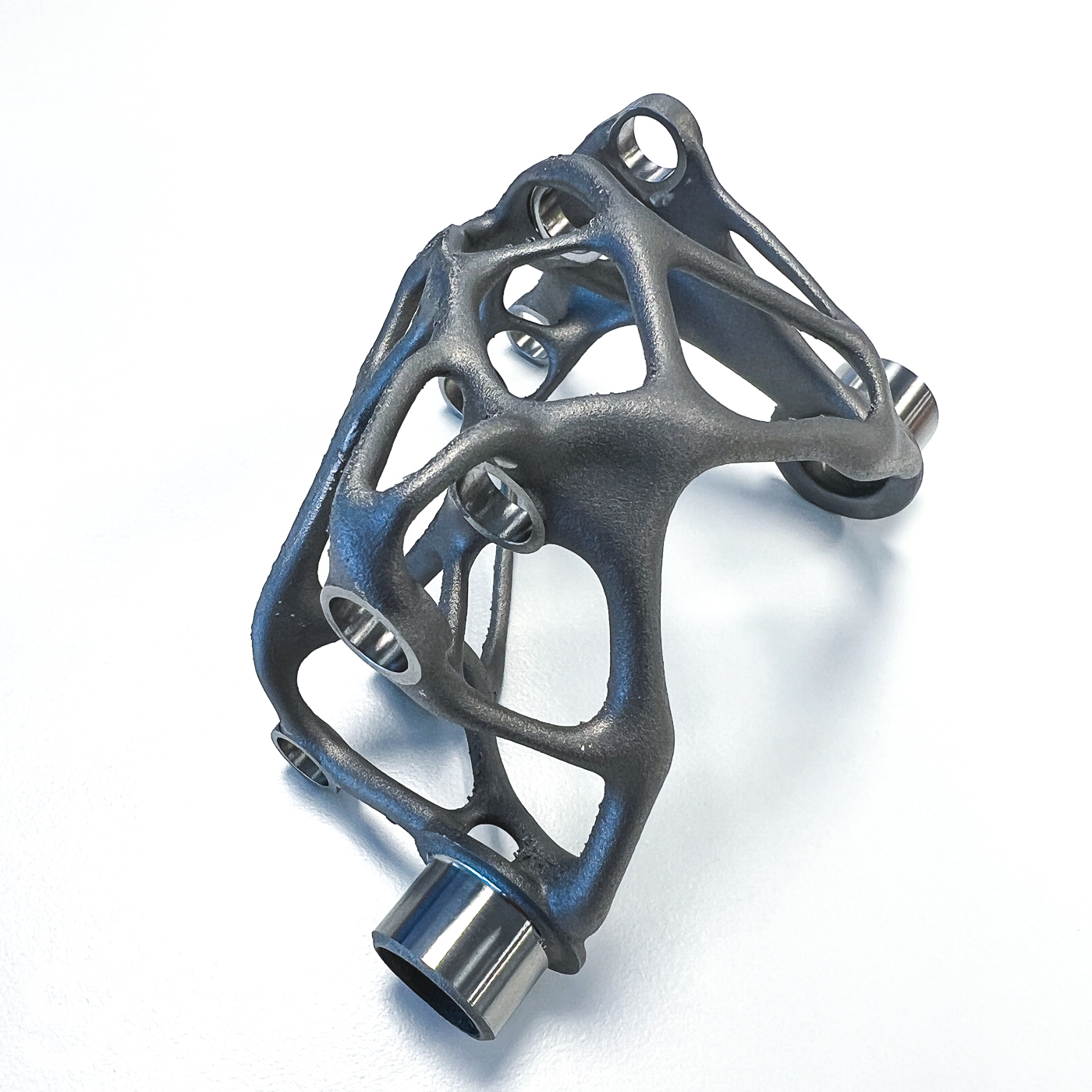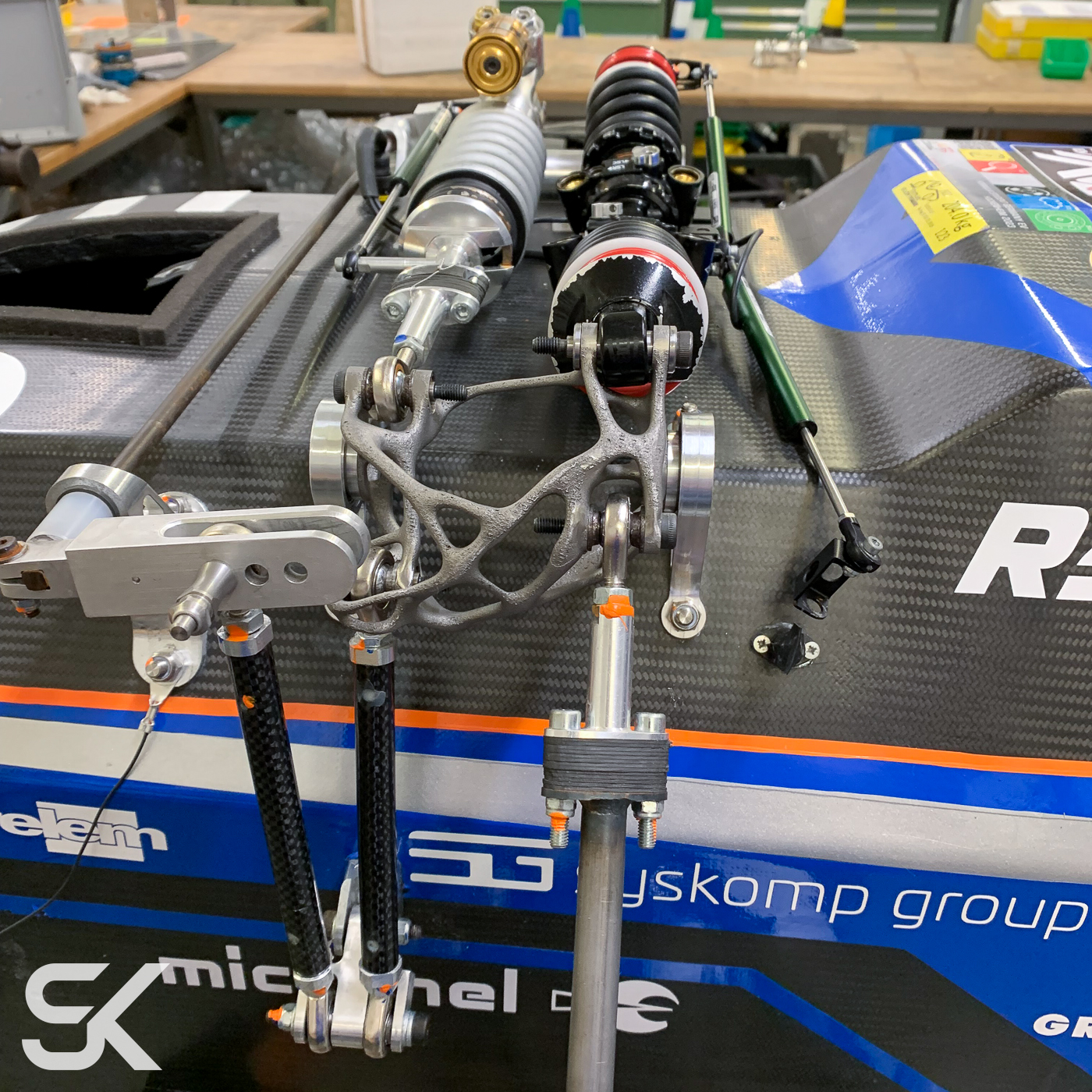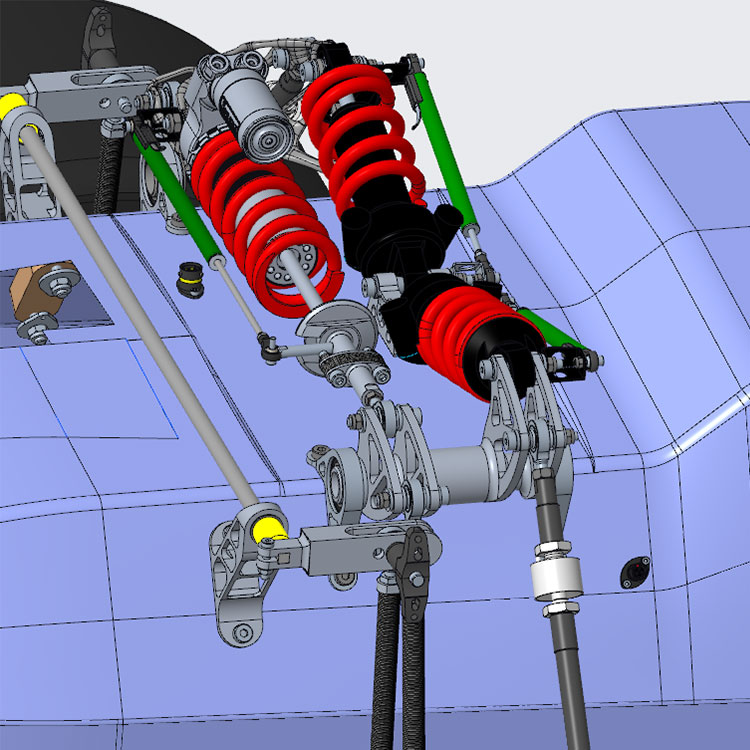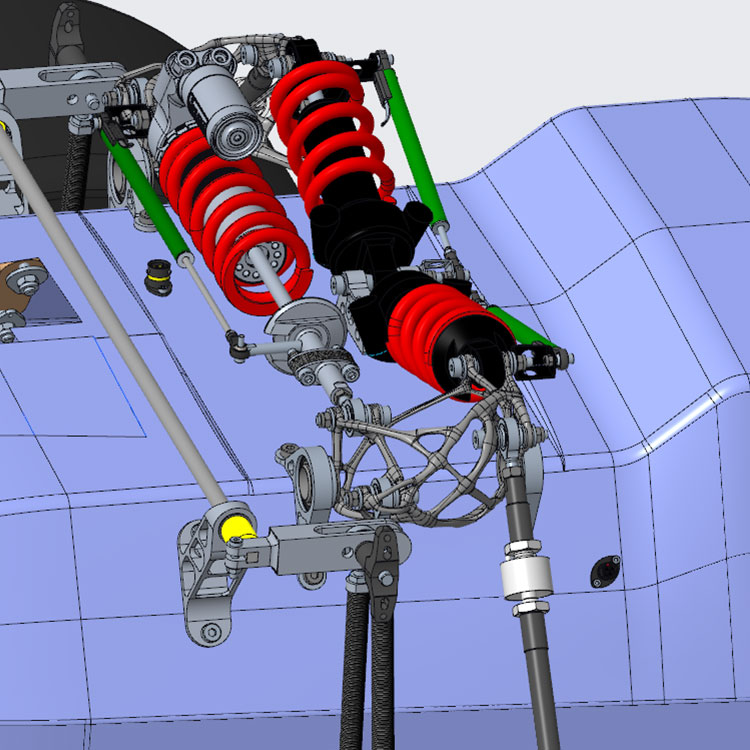SK TECHNOLOGY supports the Running Snail Racing Team in the development of an innovative Titan Bell Crank
In the world of racing, where milliseconds make the difference between winning and losing, innovation is the key to success. The Running Snail Racing Team of the OTH Amberg-Weiden has achieved a groundbreaking development here. By using a titanium 3D printing technology as well as a sophisticated milling technology, a more slender, lighter and more rigid bell crank made of titanium was created for the current chassis of their RS23 race car.
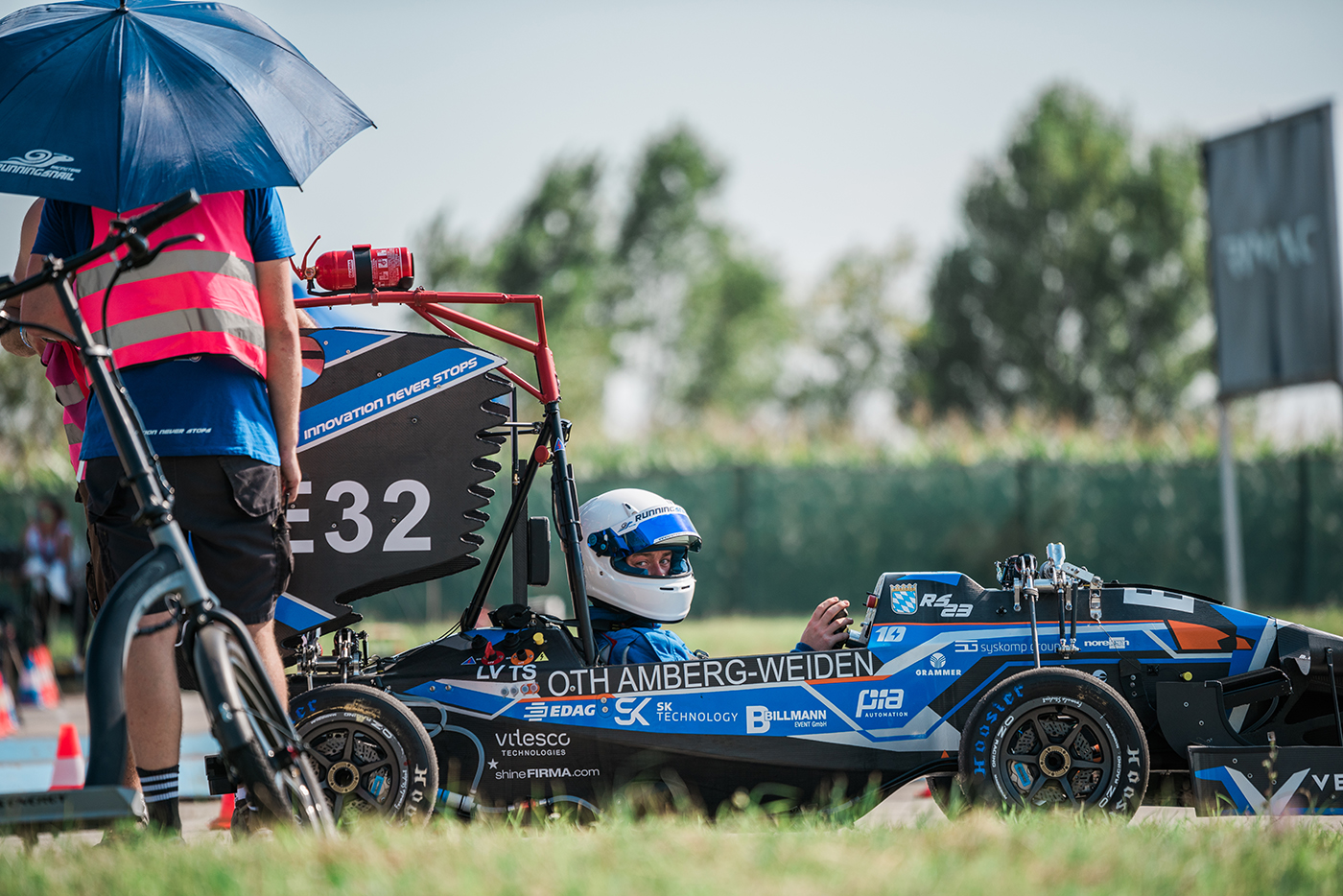
The function of a Bell Crank
The bell crank plays a crucial role in the chassis of a vehicle. It redirects forces from the tyres to the chassis and thus has a significant influence on the performance and stability of the vehicle.
The students’ team goal was to replace the original component on the RS23 race car while saving weight and increasing rigidty.
Optimization and titanium 3D printing
In close cooperation with Ansys Germany, the geometry of the bell crank was optimised with the aid of the Ansys Topology program. Ansys Mechanical performed density-based topology optimisation, considering multiple load cases and constraints and aiming to simultaneously improve both strength and equivalent stress for a given material input.
The result: an impressive 40% reduction in component weight, from 210 g to 127 g, with increased rigidity
The titanium 3D printing was done by Aconity3D GmbH.
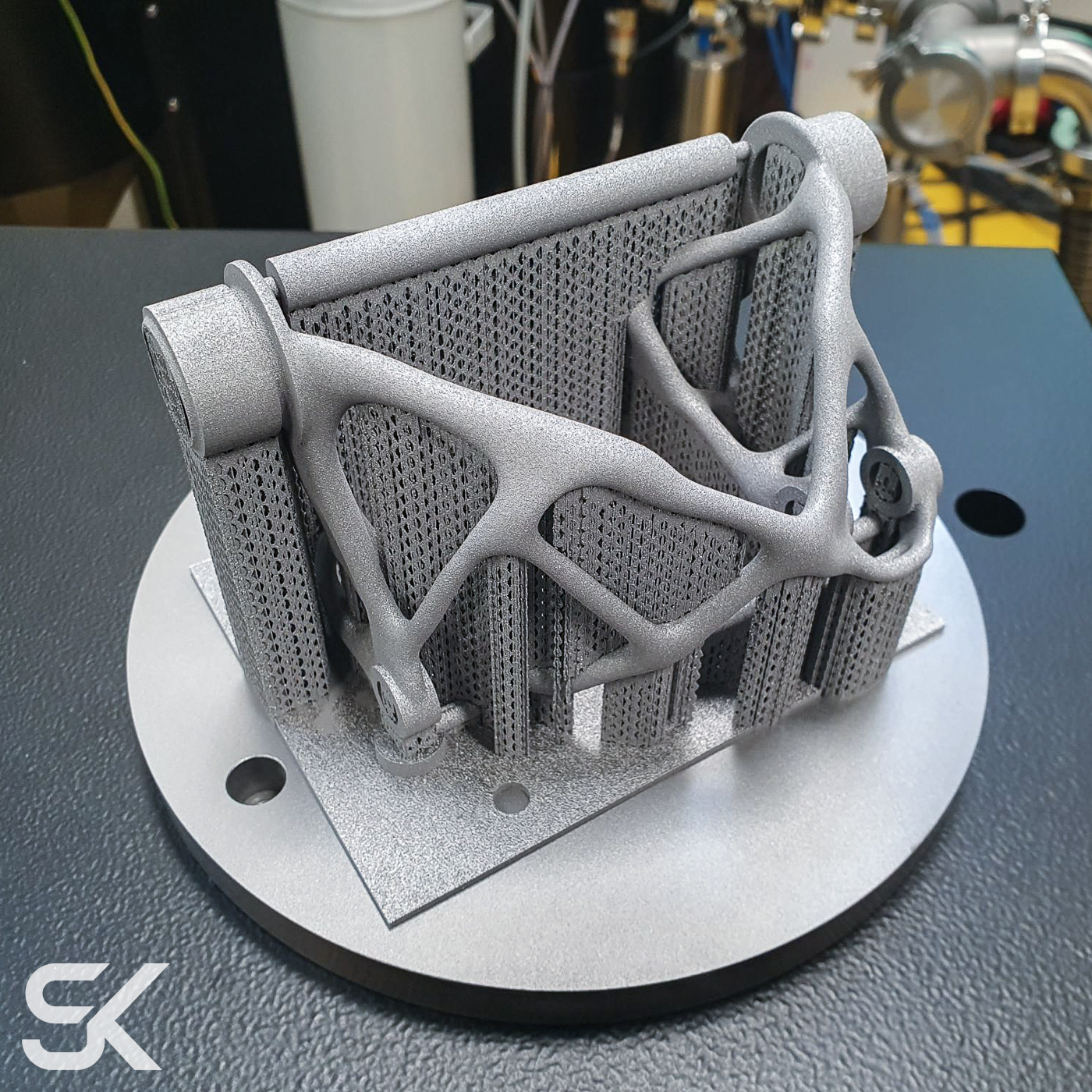
CT scanning and machining
Further processing of the printed titanium component was carried out by SK TECHNOLOGY GmbH. In order to document the actual condition of the component after removal of the support structure, the component was measured by the measurement experts Q-Tech from Roding using CT scan & GOM.
After the initial CT scan, precision machining of the bell crank was performed by a 5-axis CNC milling machine. The fits for bolt-on points on the chassis were milled. The milling program for this had been created in advance.
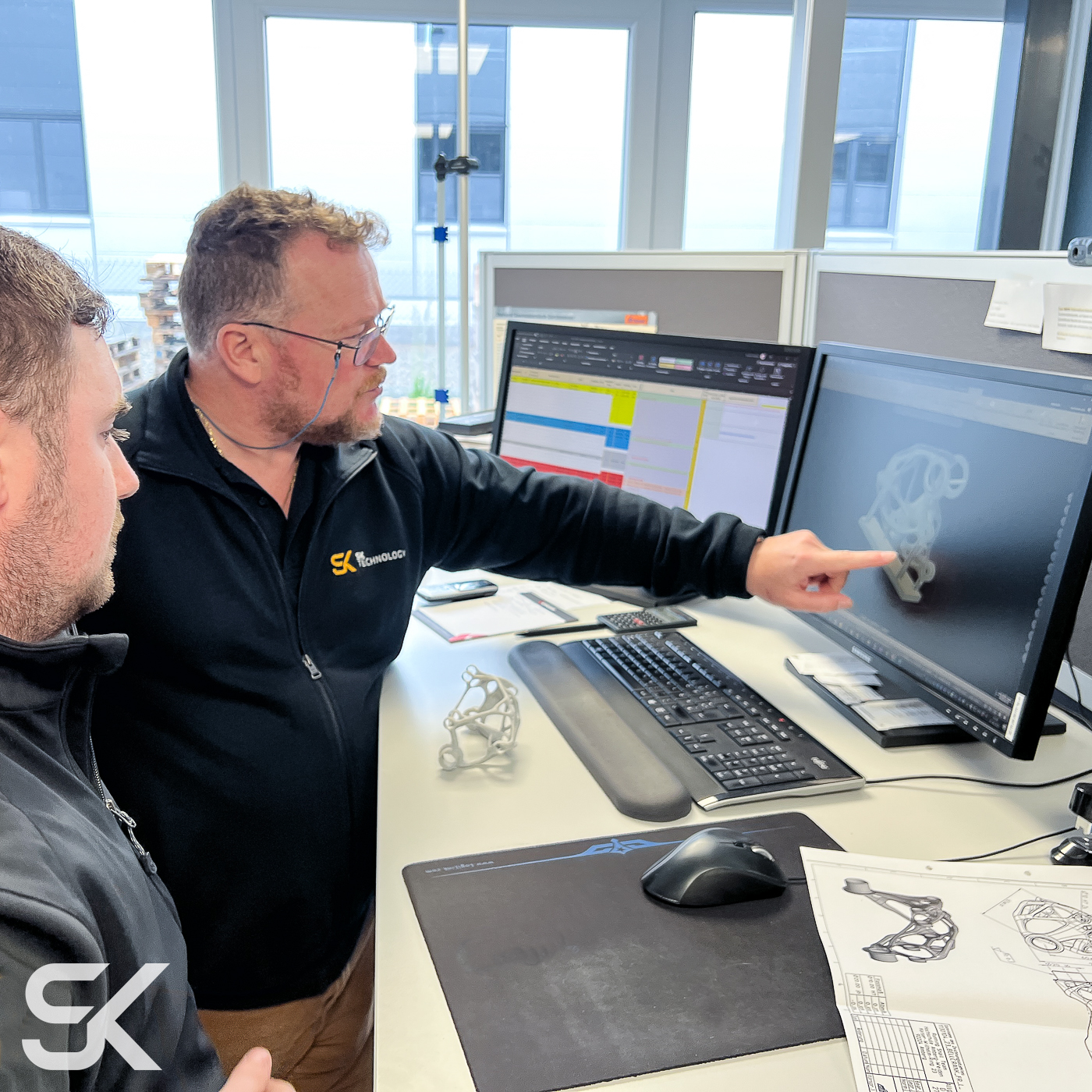
Metals with superalloys
The special feature of this component is its material composition. This is because titanium, as a superalloy metal, is one of the most difficult materials to machine and requires a high level of expertise in machining.
To track how the titanium part behaves between 3D printing and milling, a second CT scan was performed by Q-Tech.
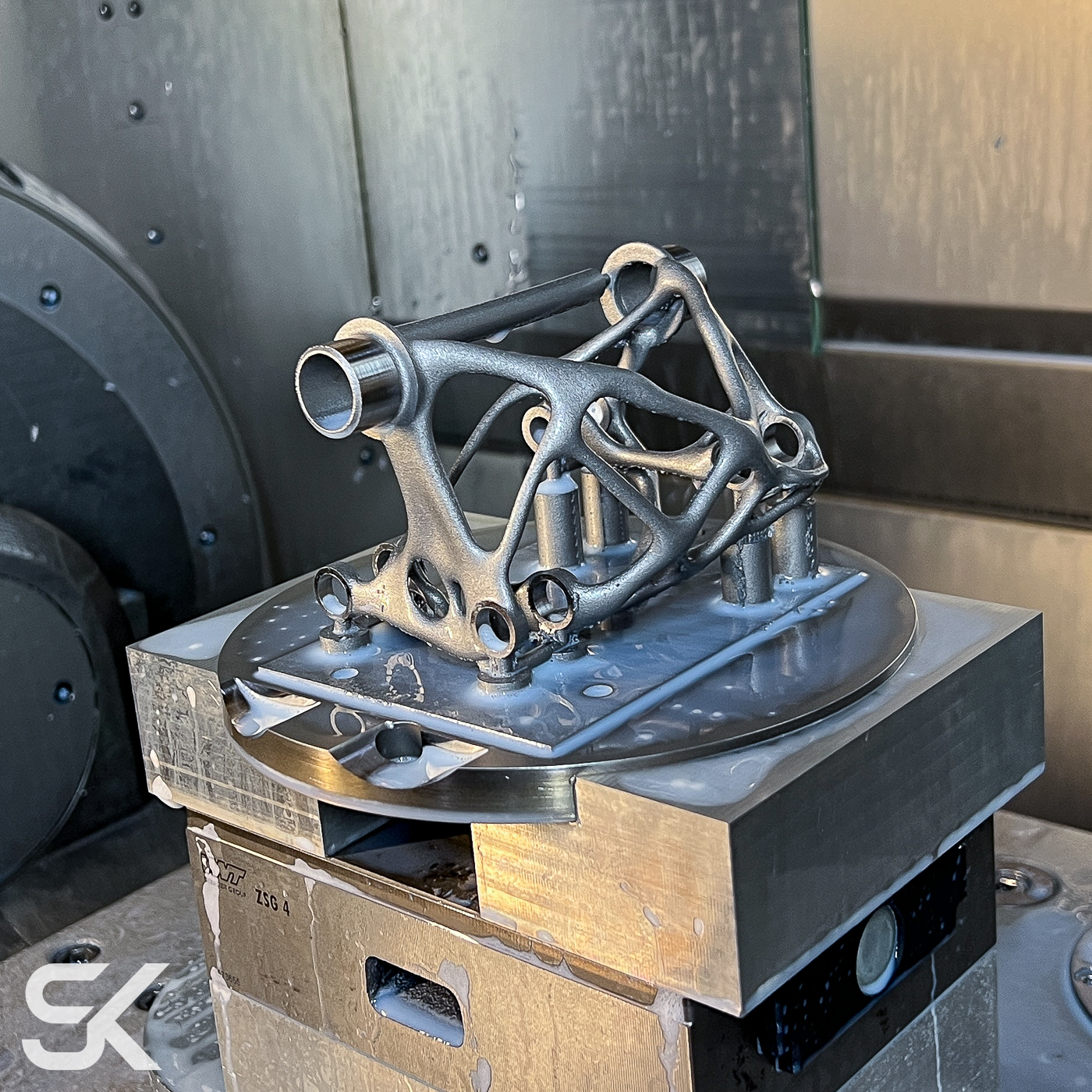
Test runs successfully completed
After only 6 weeks of project planning, the newly developed titanium bell crank was handed over to Markus Hofmann of the Running Snail Racinng Team 2023.
The revolutionary bell crank has now been installed in the RS23 racing car and has successfully completed the first test runs.
Every step of the process was critical to the success of the project. Both the 3D printing and milling of the part were done meticulously to ensure the highest precision and quality.
The Running Snail Racing Team is a project of the OTH Amberg-Weiden in which students of all disciplines of the university participate in the construction of a racing car and thus annually take part in the international design competition Formula Student.
For many years SK TECHNOLOGY has been supporting the respective Running Snail Racing Teams in their developments on the respective racing vehicles.
We wish the Running Snail Team 2023 much success with in the Formula Student.
Images Source: Running Snail Racing Team
